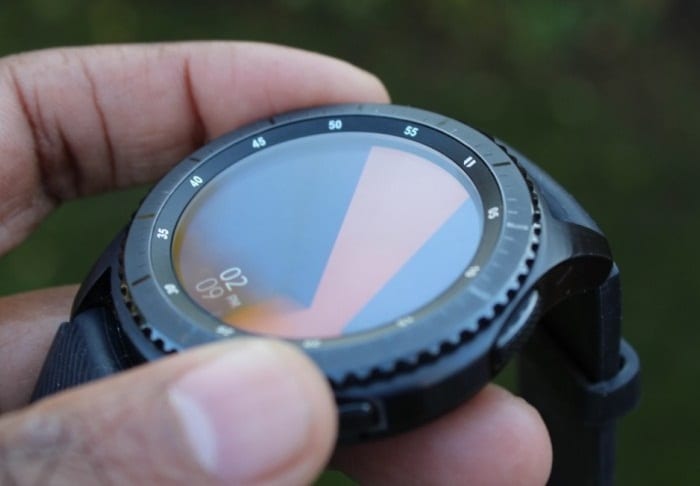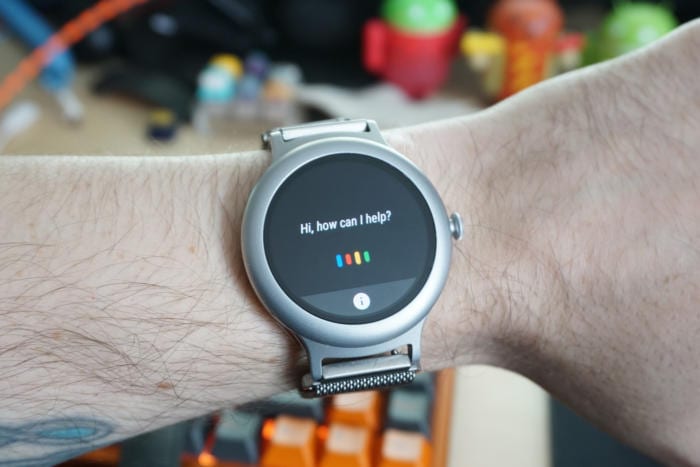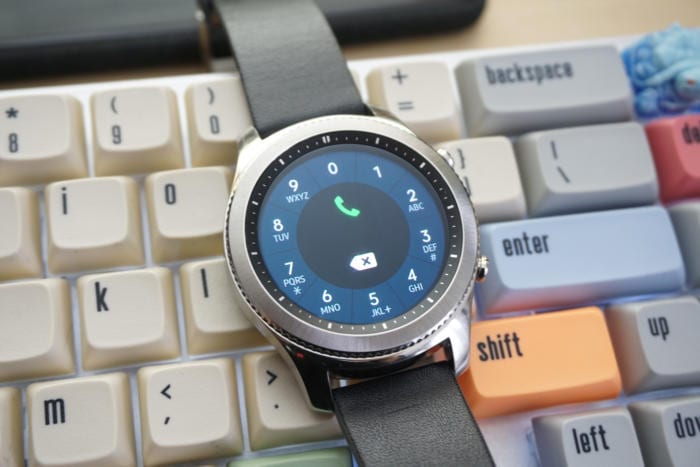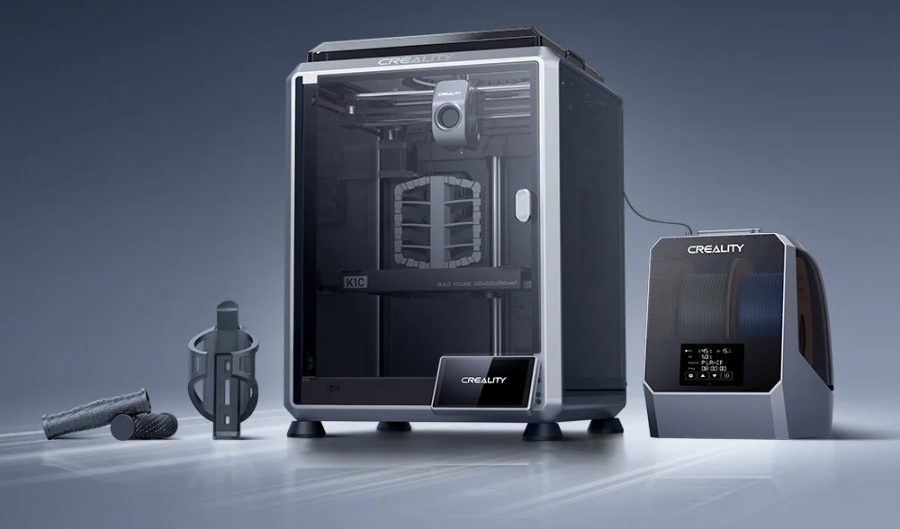If you’re looking to buy a smartwatch, you’ve to make your mind over one basic question: Samsung Gear or Android Wear? There are of course many other watch platforms, but Samsung Gear and Android Wear are definitely the top two choices you have. But what best suitable you? Let’s find out.
Android Wear has a strong app support, and a variety of models in all shapes, sizes and styles to choose from. On the other hand, Samsung’s Gear series, running the Tizen OS, has its own benefits that Android wear struggles to match. Let’s have a look at some specific criteria to help you decide which platform is the right one for you.
App Support
By encouraging developers to add Android Wear support to their existing Play Store apps, Google played the big game there itself. Though the app ecosystem isn’t as deep as it is for Android phones, there are apps from Nest, IFTTT, Play Music, Facebook Messenger, and many more big names. In Wear 2.0 and later, you can even browse the Play Store on your watch.

The poor app support is the biggest drawback for Samsung Gear watches. As the Tizen platform for smartphone itself hasn’t made any significant progress, with only four low-end devices so far (Samsung Z1, Z2, Z3, Z4), developers aren’t yet confident enough to port their apps to the platform. Samsung Gear comes with a limited pre-installed apps and a handful of downloadable ones like Flipboard and Spotify.
Verdict: Android Wear – With a strong app support, Android Wear is definitely a big winner here.
Navigation
Navigation of apps is one of the strongest points for Samsung Gear Tizen devices. You can use the rotating bezel to highlight apps or navigate through the menu and tap on the middle to open it. You no longer have to precisely tap a small section of your screen, with Ninja precision, in order for it to do something.

I’m sure that many Android wear smartwatches would love the rotating bezel, but unfortunately for them, Samsung has patented the bezel before the release of the Samsung S2.
Verdict: Samsung Gear – Is unbeatable in ease-of-navigation.
Notifications
With Android Wear, you get almost every notification on your smartwatch, from messages to e-mails to media playback notifications. The drawback, however, is that it unbundles all the bundled notifications from your phone. This literally means every single notification has its own page. This, combined with missing rotating bezel, calls for unlimited swiping (not literally) if you get loads of e-mails.

Samsung Gear, on the other hand, keeps notifications bundled. Each notification stack can be expanded, and the rotating bezel quickly scrolls through them. Though, media notifications aren’t shown (a playback widget is available which can be placed right next to your watch face), it’s still better than to look through a stack of email notifications to find a play button in Android Wear.
Both the platforms support two-way synchronisation of notifications. Once you deal with a notification on your watch, you won’t see it again on your phone.
Verdict: Samsung Gear – Though there’s no clear winner, Samsung’s approach, combined with the rotating bezel, gives Samsung Gear a plus point here.
Watch Faces
As was the case with apps, watch faces are also something that largely depends on third-party developers, one can easily guess the outright winner here. However, the situation is little better here for Samsung Gear, as compared with the app’s availability. Custom watch face design apps like Facer and Watchmaker work on both platforms. So a number of customizable watch faces are common on both Android Wear and Samsung Gear.

Verdict: Android Wear – Has a huge collection of watch faces compared to Samsung Gear. But then, the best and customizable ones are common in both.
Fitness Features
When it comes to fitness tracking, no one can beat Samsung Gear devices. The inbuilt Samsung Health app is capable of figuring out what you’re doing within seconds, automatically. You literally don’t need to open an app. Samsung Health will automatically track your activities like running, walking, cycling or swimming once you start.

Android Wear comes with Google Fit, good for step counting and heart rate tracking. In addition, some of the Android Wear makers also include their own extra fitness apps, like the case of Huawei fitness app in Huawei smartwatches. However, the big drawback with Android Wear is that Google Fit can’t track your workouts automatically. Furthermore, some Android Wear devices don’t have heart rate sensors at all.
Verdict: Samsung Gear – None of Android Wear’s built-in or third-party apps can come close to Samsung Health.
Digital Assistants
Android Wear comes integrated with Google Assistant, which can be activated by a long-press of the crown button. The accuracy and capabilities of Google Assistant are fantastic. You can perform searches, set reminders, and control smart home devices, right from your watch just with voice commands.

Samsung also has its own digital assistant, Bixby, but is yet to be available for Gear watches. Samsung Gear watches come with S Voice, but it’s definitely showing its age. It’s quite good for inputting text or creating a reminder, but nowhere near Google Assistant. However, Bixby, with smart home integration, is expected to be available for Samsung Gear series very soon and possibly will show up on the upcoming Gear S4 smartwatch.
Verdict: Android Wear – The wide array of features Google Assistant boasts makes Android Wear a clear winner here. But, come Bixby, Samsung Gear won’t be too far behind.
Calling
Most of the Android Wear have speakers and microphones so you can make a call or take one without even touching your phone. There are also some LTE models which allow you to make calls even if your phone is not around.
Samsung Gear watches also allow making calls, but support varies across models. For instance, the Gear Sport and Gear S2 both lack a speaker, so you need a connected phone or Bluetooth headset to hear anything from the other side. There’s only a couple of cellular voice capabilities on the Gear side, the Gear S, Gear S3 Frontier LTE and Gear S2 3G.

When it comes to dial pad, Android Wear has a very cramped one, making it difficult to dial numbers. Gear, on the other hand, has a more robust dialer.
Verdict: Draw – Varies from model to model. No significant difference.
Mobile Payments
A few of the Android Wear devices support Google’s mobile payment platform, Android Pay. But, only a few. Most of the watches ship without required NFC hardware. And again, not many stores in the market accept Android Pay.

Samsung Gear ship with Samsung Pay, one of the fastest growing mobile payment services in the world. However, only Gear S3 comes with full-fledged Samsung Pay support. It can do both NFC (like Android pay) and Magnetic Secure Transmission (MST), which is a big plus point given that MST enables you to make payments at almost any store that has a credit card reader. The Gear S2 only supports NFC payments.
Verdict: Samsung Gear – Samsung Gear S3 provides the best mobile payments experience and compatibility.
So, Samsung Gear or Android Wear?
Samsung Gear comes in a handful of almost similar-looking models, with Gear S3 being superior to them all in terms of features and capabilities. The Gear series excels in fitness tracking and navigation.
Android Wear has a large collection of devices, varying in shape, size and design. They also possess a deeper app and watch face ecosystem. The accuracy of Google Assistant also makes Android Wear an ideal choice for many.
Bottom Line: Going through the whole Samsung Gear series smartwatches, there are only a handful of them. And its fair enough to say that you shouldn’t be looking at more than three models, Gear S3 Classic, Frontier and the Gear Sport. Many will feel the Gear S2 is too old a model to go for in the current market. Now, look for some Android Wear watches in a similar range, there are plenty of them, so make sure that you make your specific choices. Compare the features, and obviously, styles and shapes you prefer. Go for the one you think has the features that you need.





















